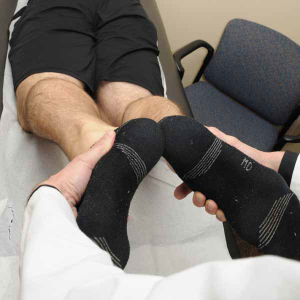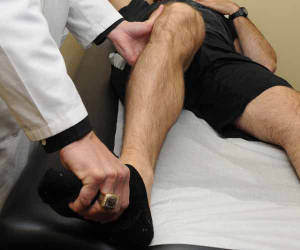The dial test is basically utilization of previously published biomechanical studies determine the amount of increased external rotation that occurs with the knee. These biomechanical studies have indicated that there will be approximately 15° of increased external rotation of a tibia on the femur with a complete posterolateral corner injury compared to the contralateral side at 30° of knee flexion. With an isolated posterolateral corner injury, when the knee is flexed at 90°, this difference between sides becomes about 5° (so it is difficult to determine if there is an actual increase in external rotation). However, when the PCL or the ACL are also injured, there will be a similar amount of 15° of increased external rotation at 90° of flexion.
One of the important things to recognize with the dial test, is it can also be positive for an isolated or combined medial knee injury. In fact, the amount of increased external rotation that occurs with a severe medial knee injury is more biomechanically than that for a posterolateral corner injury. Thus, the dial test is commonly performed with the patient in both supine and prone positions. It is important to concurrently assess for the amount of anteromedial or posterolateral tibial rotation to determine if it is a posterolateral or posteromedial (medial) knee injury.
For the dial test at 30° of knee flexion, one can perform it either supine or prone. When performed in the supine position, the knee is placed over the side of the examining table and an external rotation force is applied across the knee and through the foot and ankle with the knee flexed at 30°. One will visualize the motion of the tibial tubercle to determine if there is an increase of posterolateral rotation of 10°-15° compared to the contralateral side. When the dial test is performed prone, one assesses for side-to-side difference in rotation of the feet.


